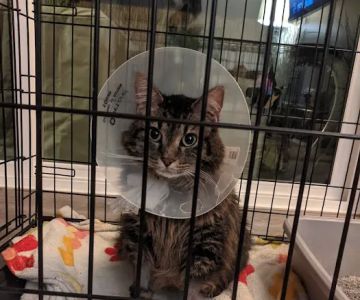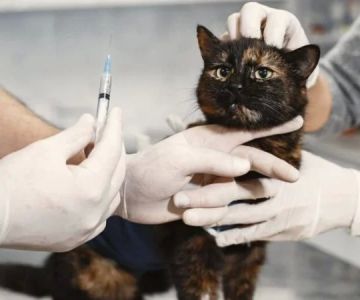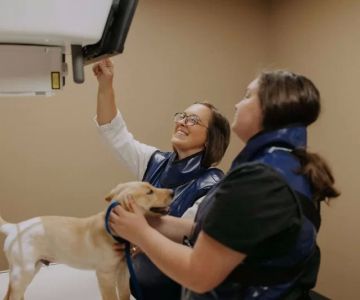What Does QAR Mean in Veterinary Terms?
As a pet owner, there’s nothing more important than understanding your pet’s health. Veterinary care involves a vast range of terminology, and sometimes, certain abbreviations can leave you scratching your head. One such term that often comes up is "QAR" in veterinary practice. If you’ve encountered this term during a visit to the vet, or while reading through your pet’s medical records, you may be wondering: What does QAR mean, and how does it relate to your pet’s health? In this article, I’ll dive deep into the meaning of QAR in veterinary terms and how it plays a role in assessing your pet's overall well-being.
1. QAR Explained: What Does it Stand For?
QAR is an abbreviation that stands for “Quiet, Alert, Responsive.” It is a common term used by veterinarians to describe a pet’s general state of health or condition during an examination. When a veterinarian assesses your pet, they will often use QAR as a shorthand way to explain the pet’s behavior and responsiveness. Let’s break this down further:
- Quiet: This means that the pet is calm and not showing signs of agitation or distress. It indicates that your pet is not exhibiting any overt signs of anxiety, pain, or discomfort.
- Alert: Being alert refers to a pet’s awareness of its surroundings. An alert pet is responsive to stimuli, such as sounds or movement, and seems aware of what is happening in its environment.
- Responsive: This part of the term means that your pet responds to interaction. For example, if the veterinarian calls your pet’s name or gently touches them, they should show some level of responsiveness.
When a veterinarian uses the term QAR, they are often conveying that the pet is not in a critical condition and is generally healthy and responsive. It’s a positive sign that your pet’s vital signs are stable, and they’re not experiencing distress or discomfort.

621 Larpenteur Ave W, Roseville, MN 55113, USA
See Details2. The Importance of QAR in Veterinary Examinations
QAR is often used as part of a quick overall assessment during a veterinary visit, helping to guide the veterinarian’s evaluation of the pet’s health. By describing the pet’s state as QAR, the veterinarian is confirming that your pet appears calm, aware, and responsive. However, this is just one part of the assessment. The veterinarian will likely look for other signs, such as:
- Body temperature – A sign of fever or infection can be determined by checking your pet's body temperature.
- Heart rate – A rapid heart rate can indicate stress, pain, or underlying health issues.
- Respiratory rate – Difficulty breathing or abnormal respiratory rates can indicate respiratory distress or illness.
These physical indicators, along with the QAR observation, give the veterinarian a more complete picture of your pet’s condition, which can help in diagnosing potential issues or confirming that everything is normal. If your pet is more than just QAR—if they are displaying symptoms of lethargy, loss of appetite, or changes in behavior—further diagnostic tests might be necessary.
3. When QAR Might Change: Signs to Watch Out For
While QAR is a good indicator of general health, it’s not always a permanent state. If your pet’s condition changes, you might notice that the QAR status shifts. A once “Quiet, Alert, Responsive” pet may start to show signs of being less alert, more quiet, or less responsive as a sign of illness. These changes could be subtle at first but may become more apparent over time.
Some changes to watch out for include:
- Lethargy: If your pet begins to sleep excessively, seems uninterested in activities they usually enjoy, or shows a lack of energy, it could be a sign of an underlying condition.
- Pain or Discomfort: If your pet becomes more withdrawn or stops responding to interaction, it might be due to pain or discomfort. This is especially true if they avoid being touched or seem sensitive to movement.
- Changes in Appetite: A sudden loss of appetite, or refusal to drink water, can indicate issues such as illness or discomfort.
If your pet’s QAR status shifts in a way that seems abnormal, it’s important to consult your veterinarian right away. It could be a sign of a serious condition that needs prompt attention.
4. How QAR Relates to Other Veterinary Terminology
In veterinary terms, QAR is often used alongside other abbreviations or descriptors to help paint a clear picture of your pet’s health. For example, a vet might use terms like:
- BAR (Bright, Alert, Responsive): Similar to QAR, but implies the pet is even more energetic and engaged with their environment.
- ADR (Ain’t Doing Right): This term is used when a pet is not acting like its normal self and may show signs of illness or discomfort.
- QRR (Quiet, Resting, Responsive): A description of a pet who is quiet and resting but still responsive to stimuli, often used for a pet recovering from surgery or illness.
Each of these terms gives the veterinarian specific insight into how your pet is doing, and understanding these descriptions can help you better interpret your pet’s medical reports.
5. How Can QAR Help You as a Pet Owner?
As a pet owner, it’s important to be aware of your pet’s behavior and overall well-being. If your vet mentions that your pet is “QAR,” it’s a reassuring sign that they are generally healthy. However, if your pet’s behavior starts to change or if they seem lethargic or unresponsive, this could be an indication that something is wrong, and you should seek veterinary care.
Being able to understand veterinary terms like QAR can help you feel more confident during vet visits and empower you to take an active role in monitoring your pet’s health. If you notice any changes in your pet’s behavior or notice any signs that don’t align with their usual QAR status, don't hesitate to ask your veterinarian for advice or schedule a check-up.
6. Conclusion: Understanding QAR and Your Pet's Health
QAR, or Quiet, Alert, Responsive, is an important veterinary term that helps describe your pet’s general state of health. It indicates that your pet is not in distress and is responding well to their environment. However, as with any term, it’s important to be aware of any changes in your pet’s behavior and health, and to seek veterinary advice if you notice something unusual. By understanding the significance of QAR and other veterinary terminology, you can play a more active role in your pet’s well-being.
OLD Keywords-31: SEO Title: Understanding QAR in Veterinary Terms: What Does it Mean for Your Pet’s Health? SEO Keywords: QAR in veterinary terms, pet health assessment, veterinary terminology, pet behavior, understanding veterinary terms, QAR meaning in pets SEO Description: Learn what QAR (Quiet, Alert, Responsive) means in veterinary terms and how it helps assess your pet’s health. Understand the significance of this term for your pet’s well-being and when to seek veterinary care.









